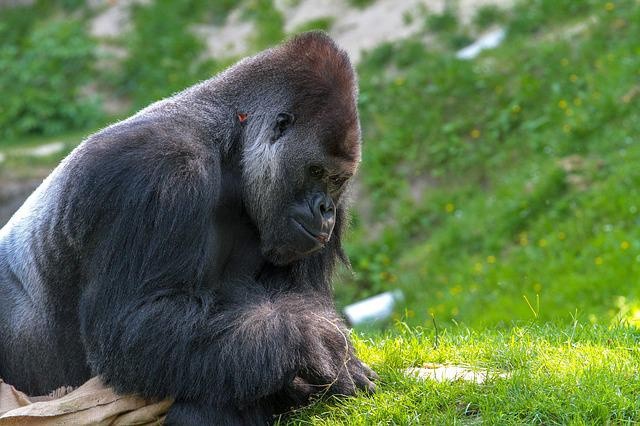
A surprise happened when Western lowland gorillas learned how to create unique vocalizing sounds to get something they wanted from human zookeepers.
These giant apes were seen making sounds like a cough-sneeze sound associated with something they wanted, like food in an Atlanta Zoo.
Apes Commonly Invent Vocal Sound
Only chimps in zoos and orangutans have demonstrated this ability to make new vocal sounds to attract our attention. Add gorillas to that list, reported Science Alert.
Koko, as many of us know, brought gorilla intelligence to the forefront in the 1980s and 1990s with her extraordinary ability to interact with people through sign language.
Roberta Salmi, a biological anthropologist at the University of Georgia, and colleagues conducted a study to determine the role of tenoning' by putting eight of the zoo's gorillas in 3 distinct situations, noted 10play.
In the first, the keeper was the only one present; in the second, the food was visible; and in the third, the keeper was grasping the meal. When the food and the keeper were nearby, they were visible but out of reach.
A similar call has been heard in other US zoos. Whereas as many as 33 gorillas housed at 11 different zoos across the United States and Canada are believed to make a similar call, only six gorillas in four different facilities have been confirmed to make the sound so far.
Salmi and her colleagues are uncertain if different groups learned independently that such a sound is beneficial or if it has been expanded by intelligent monkeys passing on their information to one another.
Read Also: Elon Musk Net Worth 2022: Tesla CEO's Value Grew from $2 Billion to $279 Billion in 10 Years!
Most aspects of language, such as vocal learning, grammar, and semantics, may be found in the communication systems of other species.
Non-human primates were once considered to lack the necessary tools to find a way to communicate via vocalizing sounds the same way that people do, but this has now been shown to be incorrect, citing Science Daily.
Primates Have Not yet Vocalized Among Themselves
This call's originality adds to a growing body of proof that primates can indeed develop additional sounds for new contexts and are thus vocal learners.
Despite the lack of evidence, active language learning in these primates shows that something is happening, according to the study.
In earlier studies, gorillas can recognize and distinguish between the sounds of several humans. Although these cheeky primates can copy us in different ways, an acoustic study revealed that the gorilla's snort is a unique sound and not a mimic.
The author's study results demonstrate that these large primates are not just big dumb gorillas. They can also devise sounds and associate them with gestures to catch the attention of anyone, like their caregiver or zookeeper, as mentioned in a study published in Plos One.
The scientist added that these primates are more capable than is thought; despite not being capable of talking. Western lowland gorillas can make their unique vocalizing sounds in separate groups showing there is more going on, even if they cannot talk.
Related Article : Scientists Devise Largest Family Tree for Primates That Shows How Living, Extinct Animals Are Accounted For
© 2025 HNGN, All rights reserved. Do not reproduce without permission.








